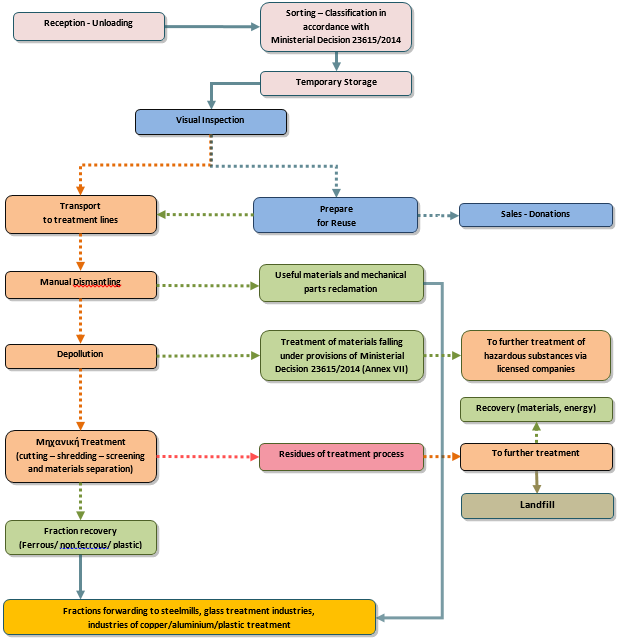WEEE treatment
WEEE treatment
After being collected in the special recycling bins, electrical and electronic devices, lamps, ink and toner cartridges are transported to twelve licensed treatment facilities, which are contracted to Appliances Recycling S.A., located in key strategic points across the country.
These facilities are licensed and certified to meet the highest environmental standards Waste Electrical & Electronic Equipment (WEEE) management. They ensure the environmentally responsible treatment of devices through specialized processes, based on their category. The main stages of treatment include receiving and weighing loads, unloading WEEE from trucks, classifying devices by type of device, temporarily storing them on-site, disassembling WEEE and recovering components containing hazardous substances.
Next, WEEE undergoes mechanical processing, where materials are separated and recovered. Hazardous substances are securely stored and managed by appropriately licensed companies. Once the treatment process is complete, reusable materials are reintroduced as raw materials for the production of new products. Recovered iron is sent to Greek steel mills. Glass and plastic are forwarded to the respective industries in Greece and abroad.
In the waste managemet hierarchy, reuse takes precedence over recycling, as it extends product life-cycle and reduces the generation of waste. For this reason, Appliances Recycling S.A. participated as a coordinator in the European Electrical Waste Reuse Program Life ReWeee. Two specialized centers, one in Aspropyrgos, Attica, and another in Oreokastro, Thessaloniki, manage devices collected from Appliances Recycling S.A. bins. Once devices arrive, they are checked, classified based on their condition, and either prepared for reuse or sent for treatment if deemed unsuitable for further use.
The following diagram shows the WEEE treatment process:



